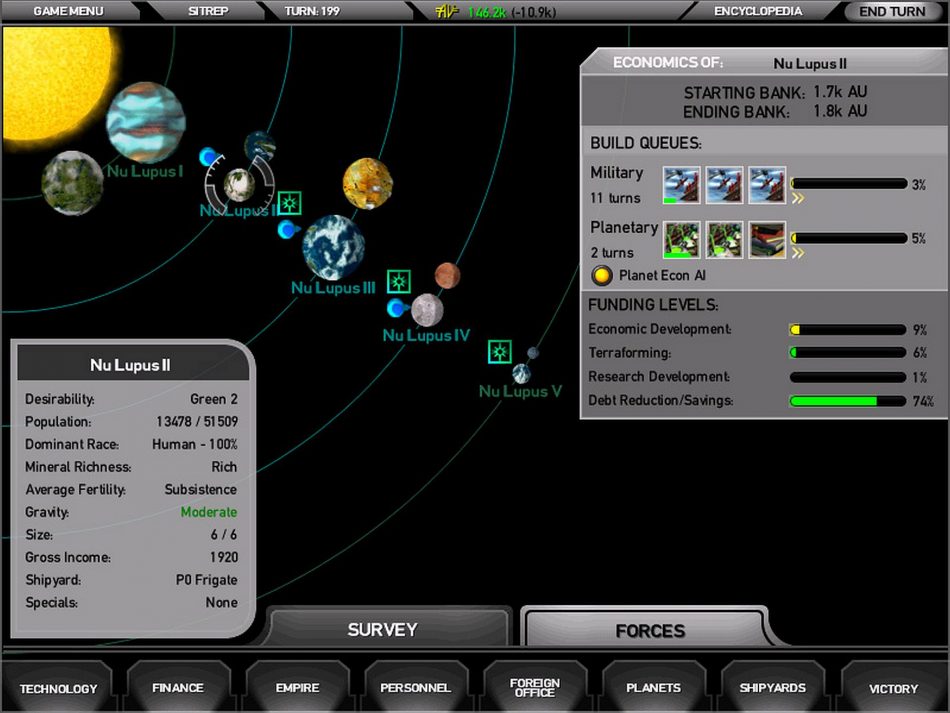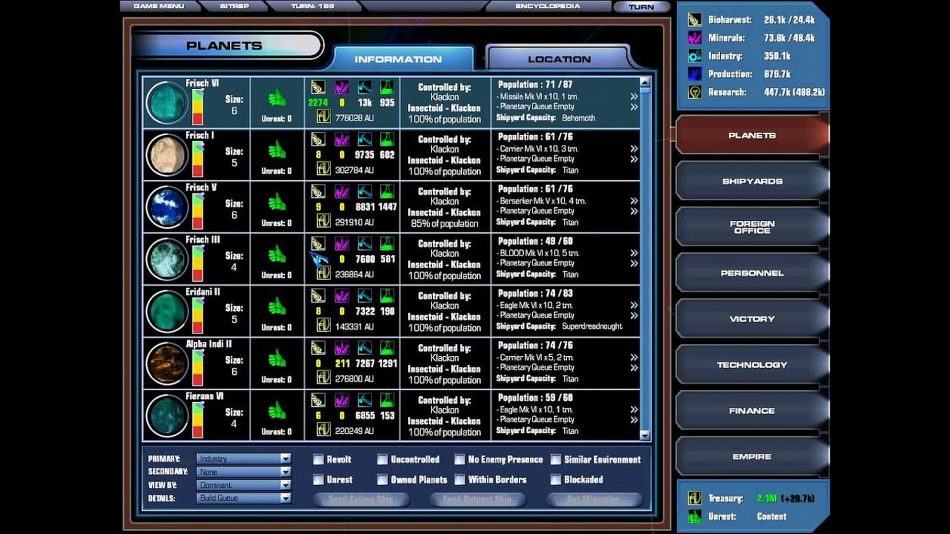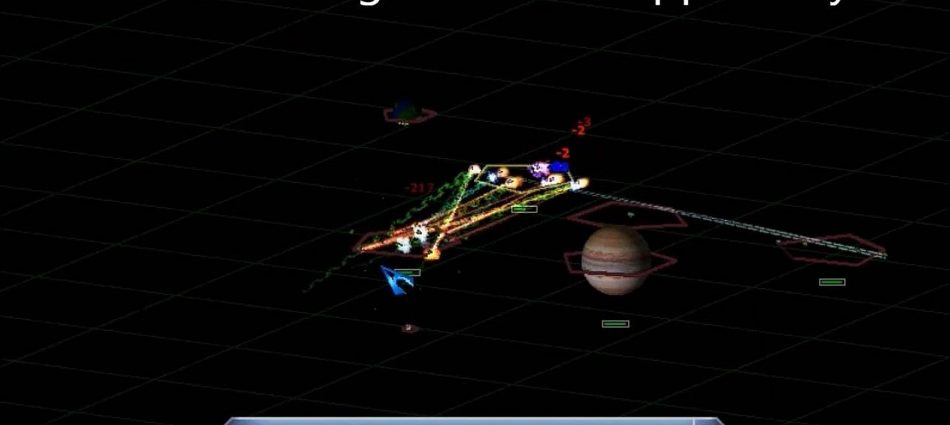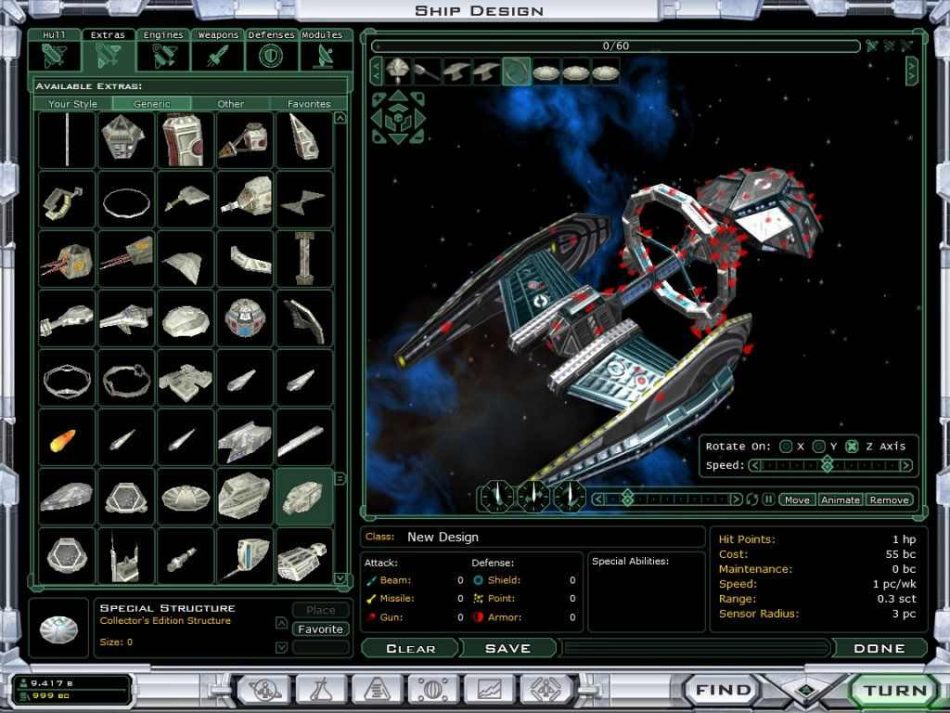Master of Orion Series Retrospective (Part Three)
By Patrick S. Baker
Master of Orion III
 During the six years between the release of Master of Orion II: Battle at Antares and the release of Master of Orion III, the PC gaming world proved to be something of a Hobbesian trap for game developers and publishers, that is to say: “…. poor, nasty, brutish, and short.”
During the six years between the release of Master of Orion II: Battle at Antares and the release of Master of Orion III, the PC gaming world proved to be something of a Hobbesian trap for game developers and publishers, that is to say: “…. poor, nasty, brutish, and short.”
In 1993, MicroProse Software had merged with Spectrum HoloByte, to form MicroProse, Inc.. This merger was called “a great marriage” because “Spectrum Holobyte had a lot of cash and very few products, while Microprose had a lot of products and no cash.”
The “marriage” worked for three years, while MicroProse Software was a wholly owned subsidiary company under Spectrum HoloByte. During this happy time MicroProse produced some of the best games ever created: XCOM, Grand Prix, Civilization and Master of Orion, as well as others. But in 1996 the situation changed as Spectrum HoloByte began slashing MicroProse staff to reduce costs.

Then the Spectrum HoloByte leadership consolidated all its various Intellectual Properties under the MicroProse banner. This effectively renamed the entire company as MicroProse. The last of the old MicroProse leadership, including the legendary Sid Meier, left the company at this point, with Meier later commenting: “One of the problems [was] that many of the people (at Spectrum HoloByte) making the decisions don’t play games, and don’t, particularly like games.”
The 1997 purchase of MicroProse by GT Interactive Software fell through and MicroProse stock lost two-thirds of its value. The next year the company was acquired by Hasbro and merged with the toy giant’s video game subsidiary, Hasbro Interactive. In preparation for the Hasbro merger, MicroProse closed the Austin design studio (formerly Simtex) in June 1998. This seemed to spell the end of the Master of Orion franchise.

But, at the 1999 E3 conference, Michael Mancuso, a producer for Hasbro’s West Coast office talked with Quicksilver Software’s President, Bill Fisher. The two soon found they had much in common, especially about what made a great game. Further, Hasbro was seeking outside developers which led to the company outsourcing the development of Master of Orion III to Quicksilver.
The development of MoO III was delayed again by the purchase of Hasbro Interactive by French game company, Infogrames Entertainment, which changed the name of Hasbro Interactive to Infogrames Interactive. After which Infogrames set about rebranding all the MicroProse games as Infogrames games.
 In April 2000, Quicksilver hired Alan Emrich and Tom Hughes as developers and producers for the new sequel. The two hoped to do something new with franchise. They hoped to add a fifth “X” to the 4X genre. The fifth “X” was to be eXperience and for a short time the tentative title of the new sequel was “Master of Orion III: the Fifth X”. But that subtitle was dropped before the game was released. Emrich left the project and Quicksilver in April 2002, for reasons neither party wished to discuss.
In April 2000, Quicksilver hired Alan Emrich and Tom Hughes as developers and producers for the new sequel. The two hoped to do something new with franchise. They hoped to add a fifth “X” to the 4X genre. The fifth “X” was to be eXperience and for a short time the tentative title of the new sequel was “Master of Orion III: the Fifth X”. But that subtitle was dropped before the game was released. Emrich left the project and Quicksilver in April 2002, for reasons neither party wished to discuss.

After a long and fraught development process, MoO III (now with no subtitle) was finally released on 25 February 2003. MoO had the same basic mechanics as the previous games in the series, but it was much more complex as well. For several reasons, the game splatted like an egg dropped from a ten-story building.
The Metacritc aggregator has it at 64 out of 100 from professional reviewer and 4.2 out of 10 from users. Most reviewers cited the overly complex gameplay, the clumsy player interface, terrible graphics, and the weak AI. One reviewer gave the game points for trying to innovate within the genre but then went on to call it “a mess”. Another reviewer summed up most peoples’ thoughts about the game by calling it “brain dead.”

With that kind of press, sales of MoO III were, at best modest to awful, and certainly, it was no big time hit like the first two games in the series. MoO III was a rather sad and disappointing entry in a great series of games. The reception of MoO III was so poor that it took 13 years before another sequel was released.
Patrick S. Baker is a former US Army Field Artillery officer and retired Department of Defense employee. He has degrees in History, Political Science and Education. He has been writing history, game reviews and science-fiction professionally since 2013. Some of his other work can found at Sirius Science Fiction, Sci-Phi Journal, Armchair General and Historynet.com.
Sources:
Allgames.com at archive
“Designers Diary” at Official Website mater of Orion III
Forbes. July 25, 1997 at Forbes archive
“History of Master of Orion, The” at Making Games
Hobbes, Thomas. Leviathan with selected variants from the Latin edition of 1668, ed. Edwin Curley (Cambridge: Hackett Publishing, 1994).
Microprose Inc/DE · 10-Q · For 6/30/98 at archive
Next Generation Magazine, September 1996.
Pelit, May 2003 archived
Rock, Paper, Shotgun, Master of Orion III retrospective

Poor MoO3. I really liked the game for probably all of the wrong reasons. I still have a fond corner in my heart for this title. Shame it was such a convoluted mess.